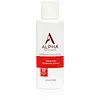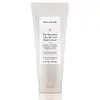What's inside
What's inside
 Key Ingredients
Key Ingredients

 Benefits
Benefits

 Concerns
Concerns

 Ingredients Side-by-side
Ingredients Side-by-side

Water
Skin ConditioningGlycolic Acid
BufferingAmmonium Hydroxide
BufferingGlyceryl Stearate
EmollientPEG-100 Stearate
Propylene Glycol
HumectantPEG-40 Stearate
EmulsifyingSorbitan Stearate
EmulsifyingCetyl Alcohol
EmollientIsopropyl Palmitate
EmollientTocopheryl Acetate
AntioxidantPetrolatum
EmollientDimethicone
EmollientMyristyl Myristate
EmollientStearic Acid
CleansingMagnesium Aluminum Silicate
AbsorbentCellulose Gum
Emulsion StabilisingSorbic Acid
PreservativeBHT
AntioxidantImidazolidinyl Urea
PreservativeWater, Glycolic Acid, Ammonium Hydroxide, Glyceryl Stearate, PEG-100 Stearate, Propylene Glycol, PEG-40 Stearate, Sorbitan Stearate, Cetyl Alcohol, Isopropyl Palmitate, Tocopheryl Acetate, Petrolatum, Dimethicone, Myristyl Myristate, Stearic Acid, Magnesium Aluminum Silicate, Cellulose Gum, Sorbic Acid, BHT, Imidazolidinyl Urea
Water
Skin ConditioningGlycolic Acid
BufferingC12-15 Alkyl Benzoate
AntimicrobialCetearyl Alcohol
EmollientIsopropyl Palmitate
EmollientSodium Hydroxide
BufferingOlus Oil
EmollientButyrospermum Parkii Butter
Skin ConditioningGlycerin
HumectantDimethicone
EmollientGlyceryl Stearate
EmollientC13-15 Alkane
SolventMagnesium Aluminum Silicate
AbsorbentPotassium Cetyl Phosphate
EmulsifyingHippophae Rhamnoides Fruit/Seed Oil
AntimicrobialCandelilla Cera
EmollientAllantoin
Skin ConditioningXanthan Gum
EmulsifyingHydrogenated Vegetable Oil
EmollientXylitylglucoside
HumectantAnhydroxylitol
HumectantXylitol
HumectantTetrasodium Glutamate Diacetate
Ethylhexylglycerin
Skin ConditioningPhenoxyethanol
PreservativeWater, Glycolic Acid, C12-15 Alkyl Benzoate, Cetearyl Alcohol, Isopropyl Palmitate, Sodium Hydroxide, Olus Oil, Butyrospermum Parkii Butter, Glycerin, Dimethicone, Glyceryl Stearate, C13-15 Alkane, Magnesium Aluminum Silicate, Potassium Cetyl Phosphate, Hippophae Rhamnoides Fruit/Seed Oil, Candelilla Cera, Allantoin, Xanthan Gum, Hydrogenated Vegetable Oil, Xylitylglucoside, Anhydroxylitol, Xylitol, Tetrasodium Glutamate Diacetate, Ethylhexylglycerin, Phenoxyethanol
 Reviews
Reviews

Ingredients Explained
These ingredients are found in both products.
Ingredients higher up in an ingredient list are typically present in a larger amount.
Dimethicone is a type of synthetic silicone created from natural materials such as quartz.
What it does:
Dimethicone comes in different viscosities:
Depending on the viscosity, dimethicone has different properties.
Ingredients lists don't always show which type is used, so we recommend reaching out to the brand if you have questions about the viscosity.
This ingredient is unlikely to cause irritation because it does not get absorbed into skin. However, people with silicone allergies should be careful about using this ingredient.
Note: Dimethicone may contribute to pilling. This is because it is not oil or water soluble, so pilling may occur when layered with products. When mixed with heavy oils in a formula, the outcome is also quite greasy.
Learn more about DimethiconeGlyceryl Stearate is a mix of glycerin and stearic acid.
It is used to stabilize the mixing of water and oil ingredients. By preventing these ingredients from separating, it can help elongate shelf life. It can also help thicken the product's texture.
As an emollient, it helps soften skin and supports barrier-replenishing ingredients.
In cosmetics, Glyceryl Stearate is often made from vegetable oils or synthetically produced.
This ingredient may not be fungal-acne safe
Fun fact: The human body also creates Glyceryl Stearate naturally.
Learn more about Glyceryl StearateGlycolic Acid is arguably the most famous alpha hydroxy acid (AHA) with tons of research backing its benefits.
It is found naturally in sugar cane but the form used in skincare is usually synthetic for purity and stability.
Glycolic acid removes the top layer of dead skin cells to allow newer and fresher ones to emerge.
AHAs work by breaking down the structural “glue” that holds old skin cells in place. When that buildup is gone, your skin can renew itself more efficiently.
Research also shows glycolic acid stimulates collagen production, helping to firm and thicken the skin over time. This is one of its biggest advantages over other AHAs.
Overall, glycolic acid helps with:
Fun fact: Glycolic acid boosts skin hydration by helping it produce molecules that increase hyaluronic acid naturally.
To work best, glycolic acid products should have a pH between 3-4 (that’s where exfoliation is most effective but still gentle on skin).
The pH and concentration of a product are key to its effectiveness:
It is normal to feel a slight stinging sensation when using glycolic acid. This usually fades as your skin adjusts.
Because glycolic acid has the smallest molecular size in the AHA family, it can penetrate deeper, which enhances its effectiveness but also makes it more likely to irritate sensitive skin.
If your skin is very sensitive or prone to rosacea, glycolic acid may be too strong; in that case, try milder options like lactic acid or a PHA instead.
Recent studies suggest glycolic acid might even help protect against UV damage. But don’t skip sunscreen! Freshly exfoliated skin is more sensitive to the sun.
Glycolic acid is a skincare superstar. It smooths, brightens, hydrates, and firms the skin. Unless you’re highly sensitive, it’s well worth adding to your routine.
Read more about some other popular AHA's here:
Learn more about Glycolic AcidIsopropyl Palmitate is a texture enhancer and emollient. It is an ester of isopropyl alcohol and palmitic acid.
Palmitates are emollients. Emollients help keep your skin soft and smooth by creating a barrier that traps moisture in.
When added to cosmetics, Isopropyl Palmitate creates a silky texture and improves spreadability.
Isopropyl Palmitate may not be fungal acne safe. It can worsen acne prone skin.
Learn more about Isopropyl PalmitateMagnesium Aluminum Silicate is a type of silica. It comes from naturally occuring minerals such as silicate ores and clay.
Magnesium aluminum silicate is used for enhancing texture and as an absorbent. Due to its large molecular size, it is unable to be absorbed into the skin.
Like other types of silica, this ingredient can be used to thicken a product. As an absorbent, it may be used to absorb extra water or help prevent clumping.
Although “aluminum” in an ingredient name can raise red flags for some consumers, the form and usage context matter significantly. For typical topical applications, there is no substantial evidence of health risks - such as cancer, neurotoxicity, or systemic “aluminum overload.”
Learn more about Magnesium Aluminum SilicateWater. It's the most common cosmetic ingredient of all. You'll usually see it at the top of ingredient lists, meaning that it makes up the largest part of the product.
So why is it so popular? Water most often acts as a solvent - this means that it helps dissolve other ingredients into the formulation.
You'll also recognize water as that liquid we all need to stay alive. If you see this, drink a glass of water. Stay hydrated!
Learn more about Water